by:
One Voice
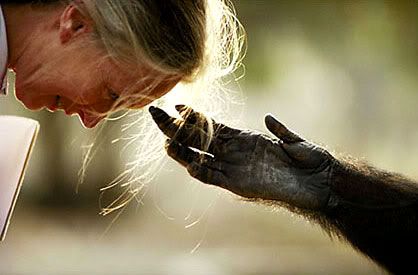
Chimpanzees are our closest relatives
Yet, with remarkable ease, humans exploit them.
There are currently some 1300 chimpanzees held in U.S. laboratories. All have numbers tattooed on their chests. Some have names.
Though by nature social, many are condemned to lives of isolation in barren cages measuring a mere 5x5x7 feet.
Countless others have been cycled through the entertainment industry. They are made to perform demanding and ridiculous routines in demeaning costumes under the threatening eye of a trainer.
"That vivisectors can look them in the eyes while perpetrating one atrocity after another on them is testament to the amorality that science permits itself. The poor, orphans, criminals, the mentally ill, Jews, and African-Americans were all at some time within the vivisector’s reach. Equally disturbing is that chimpanzees still are.
"
– Theodora Capaldo, EdD, President, NEAVS
The Stage
Performing chimpanzees are usually "children" stolen from their mothers
Training methods often include punishment, fear or deprivation
The "acts" are unnatural and often painful
The Cage
Chimpanzees have been:
Infected with syphilis, HIV, hepatitis, and other deadly viruses
Used in crash tests, radiation experiments, and space research
Used in heart transplants, drug experiments, intrusive behavioral research, and other painful protocols
The Cruelty Connection
What most people DON’T know is that there is a revolving door between the world of entertainment and the research laboratory. Many chimpanzees used in entertainment have been sent to research labs when they were no longer "cute," easy to handle or profitable.
Through the Revolving Door
The entertainment industry has been a de facto arm of the vivisection industry, cycling "used" chimpanzees to research laboratories when they were no longer "stars." They also made use of laboratories as a source of chimpanzees for movies, only to "dump" them back to the vivisectors when the lights went down.Here are a few of the many individuals who were caught in the revolving door from entertainment to research:

Sue Ellen (#440) and Billy Jo (#447), born around 1968, performed in a circus until 1983. The two chimpanzees were said to have been walked into LEMSIP in 1983, holding hands with a trainer. Neither Billy Jo nor Sue Ellen have front teeth but only bits of teeth and layers of scar tissue, indicating that their teeth were not extracted but knocked out by force. Sue Ellen and Billy Jo spent 15 years in entertainment, then 14 years in research.
They now reside at Fauna.
Annie (#272), born and captured in Africa in 1959 for the Miami Rare Bird Farm, was used in a circus before being transferred to Primate Foundation of Arizona (PFA) and to LEMSIP for breeding and menstrual and hormonal studies.
Annie lived at Fauna for 4 years before dying.
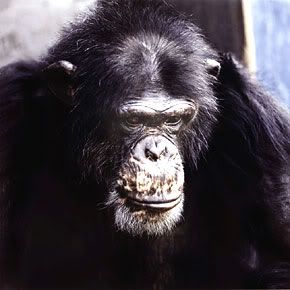
Yoko (#358) performed for a Missouri circus. His trainer would give him a hard-boiled egg and a shot of hard liquor for dinner, along with a piece of newspaper to use as a blanket. Yoko was transferred to LEMSIP in 1981. He spent 16 years in research there, being used in HIV, nasal spray and other studies. He was continuously subjected to invasive procedures, including 147 biopsies.
He now resides at Fauna.
Donna Rae (#304), born around 1966, was used by Animal Kingdom Talent Services for 12 years. She was rented out for events and performed by playing the guitar and riding a bicycle. She was transferred to the Laboratory for Experimental Medicine and Surgery in Primates (LEMSIP) in 1978 and spent 19 years in research, enduring 172 "knockdowns" for breeding, HIV and other unspecified experiments.
She now resides at the Fauna Foundation sanctuary.
When given a guitar at the sanctuary, Donna Rae immediately destroyed it.

Hanzie (#251), born and captured in Africa in the 1960’s, was used in entertainment at Jungleland in Thousand Oaks, California before being transferred to Holloman Air Force Base and the Coulston Foundation, where he was used for decompression studies and breeding.
Hanzie spent only five months of quality care and relative freedom at the Center for Captive Chimpanzee Care (CCCC) sanctuary before he died of long term heart failure.
Pablo (#377), born and captured in Africa in 1970, was used in the circus before being transferred to LEMSIP and the Buckshire Corporation, where he was used in HIV studies; "knocked down" by dart gun 220 times; and subjected to over 30 liver punches and bone marrow/lymph node biopsies.
Pablo benefited from the security and comfort of Fauna for four years before dying.
The scars of his hardships were revealed on autopsy.
Pablo spent nine years in entertainment; then 16 years in research.
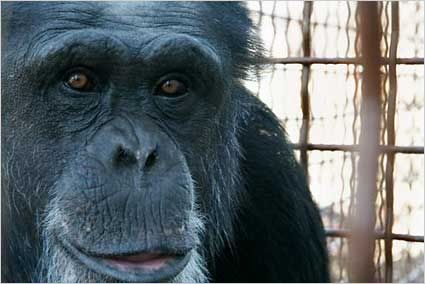
JoJo, born around 1962, was forced to perform in a circus for years. She was transferred to PFA and to LEMSIP, where she was used in hepatitis B experiments.
It is uncertain if JoJo is still alive.
Chiquita, born around 1963, performed in the circus with Annie and JoJo before being transferred to PFA and LEMSIP, where she was probably used in breeding studies.
She died in 1980.
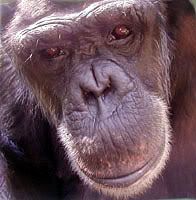
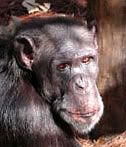
Butch and Chipper, captured in Africa in 1973 and 1975, performed with the Ringling Brothers’ Circus for more than a decade. When their circus trainer died, they were sent to a research facility. They were released to a roadside zoo, where they lived for another 13 years.
When that facility was closed by wildlife authorities, Butch and Chipper were transferred to two temporary facilities and then to the Center for Orangutan and Chimpanzee Conservation (COCC), a sanctuary, in 2000.
Angel Li (#267), Opal Li (#473) and Chiquita (#313), born in Busch Gardens between 1978 and 1980, were exhibited before being transferred to the Coulston Foundation — their last known location.
"Hanzie arrived with a broken heart which later broke ours. Unfortunately, his experiences, starting with his capture in Africa almost 40 years ago, scarred and damaged him like all the others. Did Hanzie know he was finally at sanctuary? I haven’t a clue. What I do know is that when he died there were people around him who loved him and cried at his funeral.
"
– Carole Noon, Ph.D.
, Founder
Center for Captive Chimpanzee Care
The Door Swings Both Ways
Here are some of the individuals cycled from research to entertainment:
Willie (#220) and Harry (#237), born in the Southwest Foundation for Biomedical Research, were transferred to entertainment to be used in the film "Project X." Controversy surrounded this film. Training methods were harsh and punitive and the "actors" were to be returned to research when the film was finished. One young chimpanzee died during the filming. Ironically, "Project X" was a movie about the misuse of chimpanzees in research.
Willie and Harry were rescued and reside at Primarily Primates sanctuary.
Three infants were sold by Coulston to an animal trainer.
Their future is unknown.
Safe but Not for Sure
The biomedical research community complains about the financial burden of "surplus" chimps, a "problem" created by their zealous "over-breeding." When chimpanzees proved to be "poor models" for such things as AIDS and HIV infection, many were left to languish. These government "surplus" chimpanzees COULD be called back into research when researchers "discover" a use for them.
Simba, born around 1971, performed for the Ice Capades and on the "Donny and Marie Show" before being transferred to the PFA.
He runs the risk of being "yanked from this home… and sent to a laboratory as a subject for medical research," (Wall Street Journal, April 2002).
He is not protected from a future fate in biomedical research.
ONLY chimpanzees in sanctuaries that have "ownership" and guarantee their safety from all future exploitation are truly safe.
The recent CHIMP bill passed by the U.S. government falsely claims that "surplus chimps" within the biomedical research community will be provided "sanctuary.
" Yet the CHIMP Bill does not guarantee that these chimps or their offspring are free from the vivisectors’ grasp. The chimps are still "owned" by the government.
The CHIMP Bill misuses the word "sanctuary" which should only be used to connote a place that is permanent and safe.
The CHIMP Bill and facilities affiliated with it guarantee neither.
"It is easy for me to see the connection between the entertainment industry and biomedical research for chimpanzees because I face it every day. I see their faces, and I think about what their lives were like before Fauna. Half of my chimpanzee family began their lives in entertainment only to end up being used for biomedical research. I am ashamed by the lack of respect they were shown by humans. They deserve so much more.
"
– Gloria Grow, Co-Founder
The Fauna Foundation
Help End Chimpanzee Research
Help Release Wenka and All Elder Chimpanzees
Posted By: One Voice














0 Comments:
Post a Comment